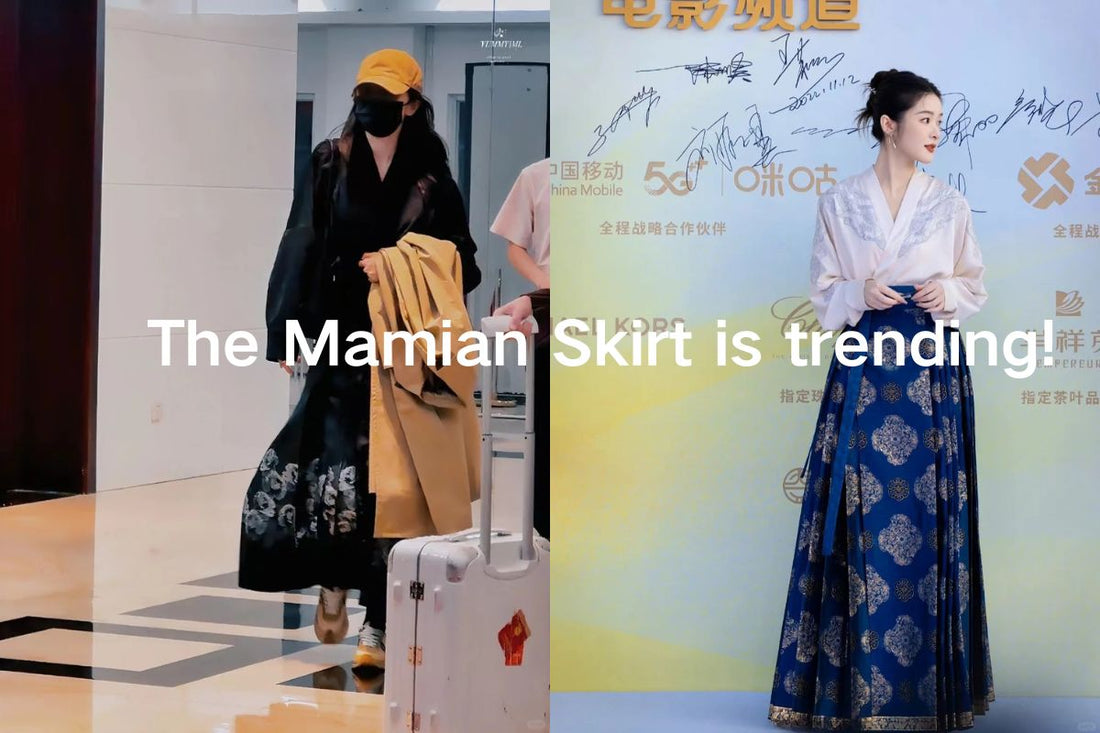
The Horseface Skirt On Fire in 2024! The Reason Behind Its Popularity Revealed...
Share
Hanfu, the traditional Chinese attire, has seen a remarkable revival not only within China but also globally. Strolling through the streets of Australia, one might effortlessly encounter young ladies adorned in Hanfu, reflecting its widespread appeal.

The horseface skirt (Mamian skirt), a style dating back to the Ming and Qing dynasties, has been particularly prominent. Official data from Cao County, China's manufacturing hub for these skirts, reported sales reaching nearly 550 million yuan in just the first two months of 2024, amounting to almost two million skirts.

The Origin of the Horseface Skirt
Initially designed for practicality during horse-riding, the horseface skirt features slits for ease of movement while preserving modesty. Its dignified silhouette became a staple of traditional fashion.

Characteristics of the Horseface Skirt
The skirt is characterized by a central panel flanked by finely pleated sections, creating a harmonious and aesthetically pleasing look.

The Horseface Skirt as a Symbol of Chinese Aesthetics
More than its cut or form, it is the cultural significance and localized aesthetics embroidered on the skirt that imbue it with its cultural identity, akin to the distinctive nature of Japanese ukiyo-e or Scottish tartan.

Celebrity Xu Jiao wearing a Mamian skirt.
The Fashion Spotlight on the Horseface Skirt
A surge in its popularity emerged when a luxury fashion brand released a similar-looking skirt, sparking debates about cultural appropriation. This incident not only put the horseface skirt back into everyday life but also reignited its practical value.
The Horseface Skirt's Return to the Spotlight
Its resurgence reflects a rediscovery of its utility: thick enough for winter wear, ceremonial in red with golden threads, and versatile enough to match various tops or to use as an improvised curtain in a sleeper train.
Traditional Attire for Modern Times
The "awakening" of the horseface skirt hints at how traditional garments should be preserved: by wearing them if they are beautiful, practical, and culturally significant, allowing them to once again become a part of the trend and shine in daily life.

